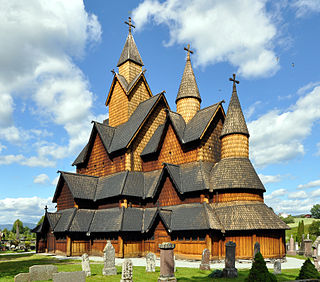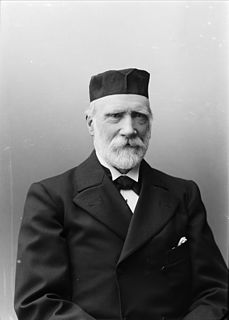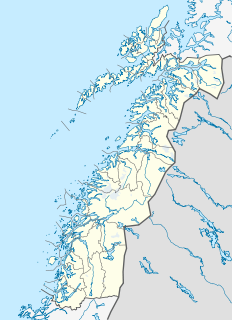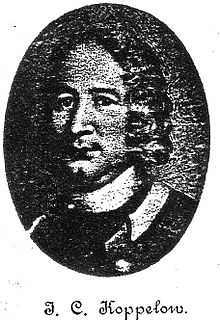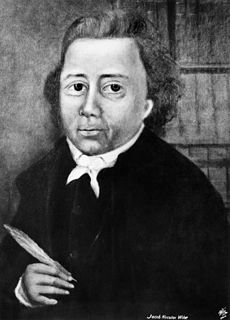Peder Carolus Jonsen Fylling, also known as Per Fylling (September 26, 1818 – November 3, 1890), was a Norwegian folk material collector, book and antique collector, local historian, and author of cultural history books and articles. [1]
Fylling was born at the Fylling farm in Skodje in Norway's Sunnmøre region, [2] the son of John Fylling and Ragnhild Sorte. His father was interested in history and he passed along both his knowledge and this interest to his son. Fylling read books that he borrowed from the priests in the district and from the Daae family at the Solnør farm. [3] Because of sickness, Fylling gave up his right to the farm in Skodje and dedicated himself to historical studies instead. He tirelessly traveled around the district, looking for old items, antiquities, folk poetry, old documents, and letters. Fylling sent his own manuscripts to the museum in Bergen, where he also sent old items and ancient artifacts that he found in the district. [3]

Skodje is a municipality in Møre og Romsdal county, Norway. It is part of the Sunnmøre region. The administrative centre is the village of Skodje. The other main village in the municipality is Valle.

Sunnmøre is the southernmost traditional district of the western Norwegian county of Møre og Romsdal. Its main city is Ålesund. The region comprises the municipalities of Giske, Hareid, Herøy, Norddal, Sande, Skodje, Haram, Stordal, Stranda, Sula, Sykkylven, Ulstein, Vanylven, Volda, Ørskog, Ørsta, and Ålesund.
The country Norway is historically divided into a number of districts. Many districts have deep historical roots, and only partially coincide with today's administrative units of counties and municipalities. The districts are defined by geographical features, often valleys, mountain ranges, fjords, plains, or coastlines, or combinations of the above. Many such regions were petty kingdoms up to the early Viking age.
In mid-June 1862, Henrik Ibsen arrived in Sunnmøre with a grant from the Collegium Academicum, the governing body at Royal Frederick University, to collect legends and folk tales. He stayed with Ludvig Daae at the Solnør farm, and it was probably Daae that who put Ibsen in touch with Peder Fylling. Ibsen's travel journal ends with his arrival at Sjøholt on July 17, 1862, after which he wrote the heading "Stories told by Peder Fylling" (Sagn fortalte af Peder Fylling). [4] The material leaves no doubt that Ibsen obtained what he was looking for from Fylling. Fylling spent three days talking to Ibsen, who wrote down a series of legends and a few folk tales.
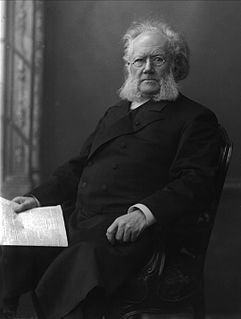
Henrik Johan Ibsen was a Norwegian playwright, theatre director, and poet. As one of the founders of modernism in theatre, Ibsen is often referred to as "the father of realism" and one of the most influential playwrights of his time. His major works include Brand, Peer Gynt, An Enemy of the People, Emperor and Galilean, A Doll's House, Hedda Gabler, Ghosts, The Wild Duck, When We Dead Awaken, Pillars of Society, The Lady from the Sea, Rosmersholm, The Master Builder, and John Gabriel Borkman. He is the most frequently performed dramatist in the world after Shakespeare, and by the early 20th century A Doll's House became the world's most performed play.
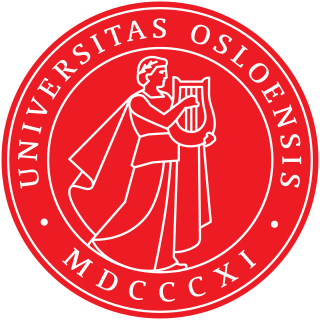
The University of Oslo, until 1939 named the Royal Frederick University, is the oldest university in Norway, located in the Norwegian capital of Oslo. Until 1 January 2016 it was the largest Norwegian institution of higher education in terms of size, now surpassed only by the Norwegian University of Science and Technology. The Academic Ranking of World Universities has ranked it the 58th best university in the world and the third best in the Nordic countries. In 2015, the Times Higher Education World University Rankings ranked it the 135th best university in the world and the seventh best in the Nordics. While in its 2016, Top 200 Rankings of European universities, the Times Higher Education listed the University of Oslo at 63rd, making it the highest ranked Norwegian university.

Ludvig Daae was a Norwegian jurist, landowner and politician for the Liberal Party. He was the Norwegian Minister of the Army from 1884 to 1885 on the cabinet of Prime Minister Johan Sverdrup.
Ibsen published four of the legends in the magazine Illustreret Nyhedsblad in the fall of 1862. Magdalene Thoresen, Ibsen's mother-in-law, had also met Peder Fylling. Thoresen used the stories that she heard from Fylling in her volume Billeder fra Vestkysten af Norge (Pictures from the West Coast of Norway, 1872). The folk material collector Thrond Sjursen Haukenæs also visited Fylling at his home in Skodje. Haukenæs wrote the following about Fylling's work: "May many more appreciate Peder Fylling's activities, and may this often be carried out by men from the peasantry who ought to possess his investigative spirit for the benefit of the country and its people." [3]

Illustreret Nyhedsblad was a Norwegian weekly magazine, issued from 1851 to 1866 in Christiania, Norway. Its first editor was Paul Botten-Hansen, who edited the magazine from 1851 to 1864 and from 1865 to 1866, with Frederik Bætzmann being editor from 1864 to 1865. Among its contributors were Bjørnstjerne Bjørnson, Henrik Ibsen, Ernst Sars and Camilla Collett. Ibsen's plays Hærmændene paa Helgeland and Kærlighedens komedie were published as supplements to the magazine.

Anna Magdalene Thoresen, née Kragh was a Danish-born Norwegian poet, novelist, short story writer and playwright. She is said to have inspired a number of other writers to model characters after her. Her stepdaughter, Suzannah Ibsen, was married to Henrik Ibsen.
Thrond Sjursen Haukenæs was a Norwegian folklore collector and an author, publisher, and distributor of his own works.
Fylling himself published the volume Folkesagn samlede paa Søndmør 1ste Del (Folk Material Gathered in Sunnmøre, Part 1) in 1874. The second part was published in 1877, and the last part in 1942, 52 years after his death. Fylling mostly wrote in a rigid Riksmål form that was far from his own dialect, and only once did he write in his local dialect. He also did not have much contact with the work of his contemporary Ivar Aasen, who lived with the Daae family at Solnør for seven years. [3]
Riksmål is a written Norwegian language form, meaning the National Language, based on the Dano-Norwegian language used by the upper class in Christiania in the 19th century.
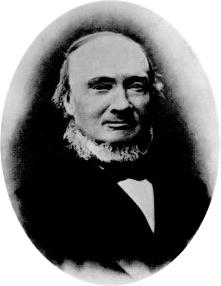
Ivar Andreas Aasen was a Norwegian philologist, lexicographer, playwright, and poet. He is best known for having assembled from dialects one of the two official written versions of the Norwegian language, Nynorsk.
Fylling died at the Fylling farm. [2]



